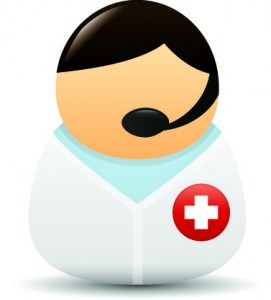Healthcare with Confidence
A lung biopsy in Israel, in most cases, is performed to diagnose problems that were previously discovered by visual tests – chest x-ray, CT, which require clarification. A lung biopsy is taken from tissues and lymph nodes with suspected lung cancer or inflammatory lung diseases – bacterial pneumonia, tuberculosis, etc.
We collaborate with leading Israeli cardiothoracic surgeons, experienced specialists in the field of lung biopsy. Our doctors perform the procedure at the the leading Israeli hospital Assuta.
⇒ Best cardiologists of Israel 2022 – Forbes
Typically, a lung biopsy is performed using a bronchoscopy procedure.
Bronchoscopy is a test that allows the doctor to examine the upper and lower airways (lungs, airways, vocal cords and bronchi). The test is carried out by inserting a device with a camera and lamp (bronchoscope) into the airways through the nose or mouth. Doctor can see the organs condition on the screen and evaluate it.
The test is performed using a flexible bronchoscope under local anesthesia or a hard bronchoscope under general anesthesia. The type of bronchoscope is determined depending on the purpose of the examination. Most bronchoscopy procedures performed today are done using a flexible bronchoscope and only under local anesthesia.
During the test, it is impossible to examine the lung tissue itself, but doctor can take a lung biopsy (tissue sample) for a pathological examination. Bronchoscopy can also be used for laser treatment of airway obstruction due to tracheal or obstructive tumors. Another cause of bronchoscopy is an emergency: removal of a foreign body that can block the airways, or the detection and treatment of bleeding that can cause flooding of the lungs and suffocation.
Lung Cancer Doctors – Consultation Online
How is bronchoscopy with a lung biopsy performed?
The test is usually performed while the patient is lying down, but can sometimes be performed in a sitting position. Before installing the bronchoscope, the doctor injects the anesthetic intravenously, and also distributes the local anesthetic with a spray into the nasal cavity and throat to reduce discomfort when installing the bronchoscope in order to prevent irritation and cough, and suppress the gag reflex.
Flexible bronchoscopy does not cause pain, but it can cause discomfort, cough or gagging. At the beginning of the stimulating material action, a flexible bronchoscope will be carefully inserted into the nose or mouth. The tube of the bronchoscope passes through the mouth or nose, larynx, through the vocal cords, into the lower canal and into the lungs.
Depending on the diagnostic needs, a tissue sample can be taken during a bronchoscopy test using several methods:
- Fine needle aspiration FNA — a thin needle is inserted from the walls of the airways to collect a sample, including from a tumor.
Forceps biopsy – if a tumor is found in the airways or lungs, doctor will pass the appropriate forceps through a bronchoscope to take a tissue sample from a suspicious mass and send it for a pathological examination to the Israeli laboratory. Forceps are also used if necessary to remove a foreign body from the lungs.
Lung lavage or washing – doctor injects saline through a bronchoscope into the area from which the sample is required, and the fluid is pumped back. This process is performed several times. The fluid is sent for a pathological examination to the laboratory of Israel.
Lung cleaning – doctor introduces a soft brush through the bronchoscope to clean the airways. Cleansing causes the separation of cells that will be sent for a pathological examination to the laboratory of Israel.
Bronchoscopy with a lung biopsy can take 15-60 minutes, depending on the purpose of the test and the procedures performed during it.
Bronchoscopy with a biopsy of the chest (mediastinum) lymph nodes
Bronchoscopy is also performed to diagnose lymph nodes of the chest.
Currently, Israeli doctors have the opportunity to conduct an ultrasound examination to assess the lymph nodes of the mediastinum. Modern bronchoscopy allows Israeli specialists to insert a needle through the bronchus or trunk into the glands in the center of the chest, which avoids the need for general anesthesia. Bronchoscopy also reduces the pain and speeds up the lung and lymph nodes biopsy procedure, making the test results more accessible than with mediastinoscopy.
Patients whose computed tomography of the chest revealed enlarged lymph nodes need a more in-depth study with a refinement that requires a biopsy of the lymph nodes. Enlarged lymph nodes of the mediastinum can be characterized by various diseases, ranging from mild diseases that do not require treatment to serious. Today, a lymph node biopsy is performed under general anesthesia.
Success rates and risks of bronchoscopy with lung biopsy
Despite the fact that, as a rule, bronchoscopy and lung biopsy is a safe procedure with a low level of complications, it is important to be aware of the risks and complications that may arise during its implementation. To reduce the risks, an experienced Israeli doctor will inform you in detail about the proper behavior and all the details during the procedure, so that you can more easily adapt to the procedure and it goes without complications.
Complications that can occur after the test include bleeding, infection, damage to the vocal cords, impaired or decreased oxygen supply to the heart, bleeding from the biopsy area, puncture of the lung, which can cause air leakage from it, and accumulation around lung tissue, especially if the test is performed using a hard bronchoscope. It is important to that bronchoscopy will be done by an experienced doctor.
Preparation for a bronchoscopy with lung biopsy, and hospitalization
Before the procedure, we will arrange for you the necessary blood tests, including coagulation (PT, PTT), which is mandatory for the test.
We will also make sure that the doctor first receives and reviews your x-ray or CT scan.
Our doctor will also consult you if you suffer from high blood pressure or heart disease and are taking medication on an ongoing basis. For example, anticoagulants, including aspirin, fluoxetine, or blood thinners such as Clexane or Coumadin will need to be stopped a few days before the test.
If you have diabetes, you should not take insulin on the morning of the test, but you need to take it with you. 6 hours before the procedure, you must also stop eating.
After bronchoscopy
At the end of the test, the patient rests and is monitored in the day hospital room to monitor the effect of anesthesia drugs. If necessary, the patient receives pain medication.
Depending on the type of test you have taken and the procedures performed, you may be referred for chest imaging approximately one hour after the test. As soon as you wake up and your condition allows, you can leave the hospital and we will take you to your place of residence in Israel.
One to two hours after the end of the test, you can eat. Before discharge, your doctor will provide test results and instructions to continue treatment or follow up.
The histopathology results of the biopsy will be ready in a few days, up to a maximum of 5 days.



